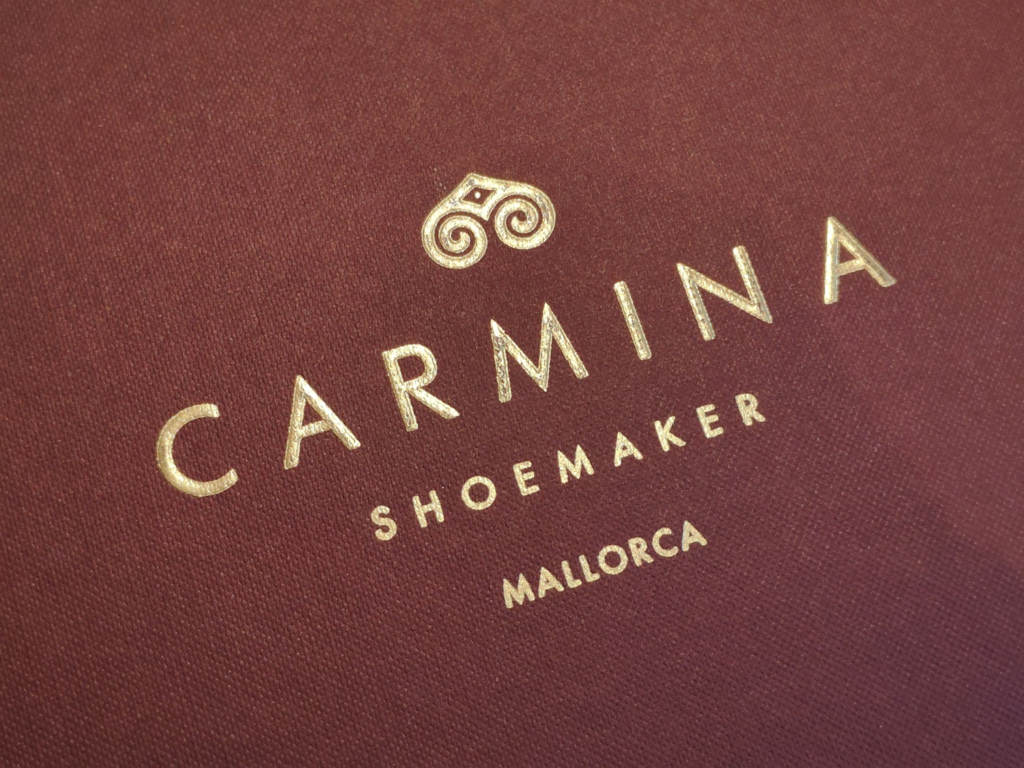Carmina was the first Spanish brand I came across. It was also the first Spanish dress shoe brand emerging in the classic menswear revival movement. It can be said that the emergence of so many Spanish brands today is due to the shadow of Carmina.
I also introduced the Albaladejo Pujas family, the imperial presence of the Spanish shoe industry. Carmina is one of the brands of this family and should be the most important one.
Carmina’s appearance is indeed expected, because British shoe brands have not changed for decades, Carmina appeared with an amazing price-performance ratio and instantly became the darling of the market. Half the price of the British brand of the same level, equipped with Horween shell cordovan that is almost impossible to see in Europe, and the colour choice is like a fresh vegetable and fruit stall.
JR leather sole, as the world’s most well-known oak tanned leather outsole, is by default on Carmina’s shoes.
Carmina’s Rain Last, accompanied by its wholecut Oxford 910, has become a staple for all shoe fans. Where is Rain Last in particular? This article is going to tell.
Unboxing

This shoe box, both in terms of logo and color, has gained great recognition. Carmina’s logo is distinctive, but what exactly it represents is worth exploring.
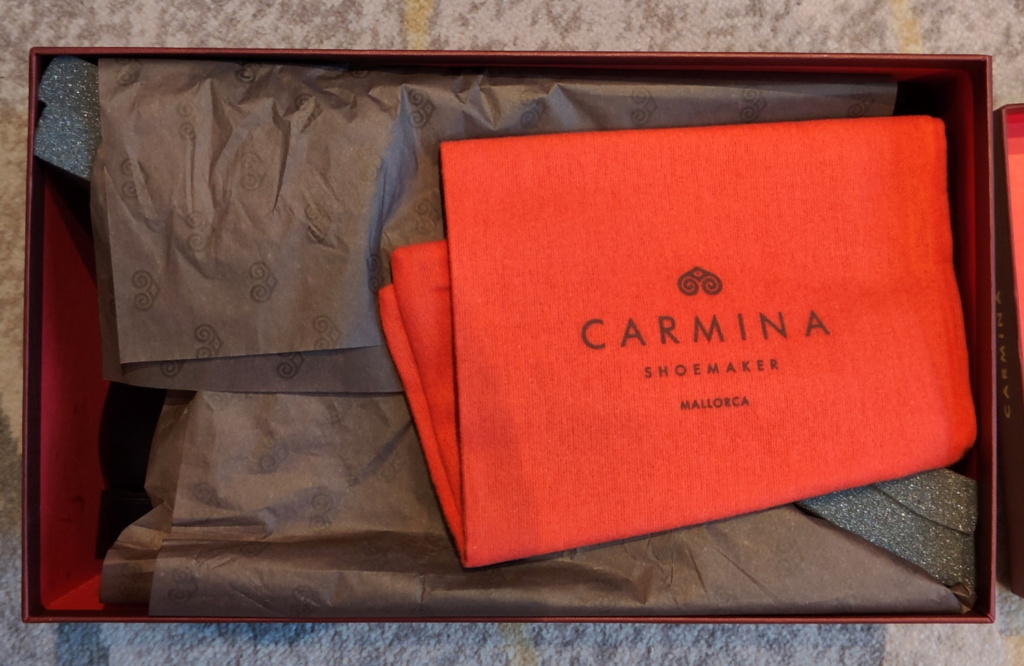
Remove the lid of the shoe box, there are more brightly colored shoe bags and stuffing print paper.

Unwrap print paper, the shoes were revealled.
Last and Pattern
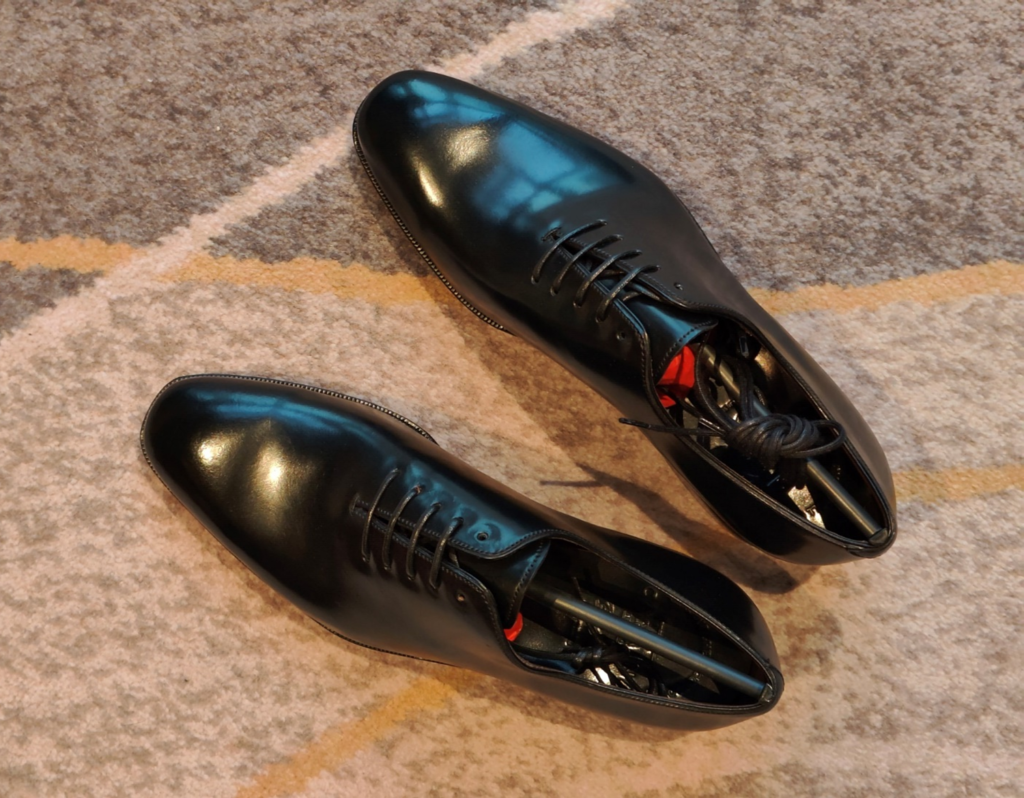
The one-piece Oxford style, the upper design is of course to highlight “nothing”.
So all the focus is on the last. Very interesting, this is my fourth pair of Carmina and my fourth pair of Rain last. That said, I’ve only tried the Rain last.
According to the information given by Carmina’s official website, the British round toe last Forest is the first and the longest-lived last. As far as I know, it was Rain that helped Carmina conquer the game.
The Rain last is a small square-headed soft chisel. Chisel toe was invented by British bespoke shoemaker Nikaulas Tuzcek who introduced Eastern European features and was later passed down to George Cleverley. But it was Carmina who brought this feature into the public eye.
In addition to this chisel concept, which was fresh at the time, what conclusions can we draw when we look at the Rain last today? I think it’s a fusion of English and French elegance.
Because the curve from the widest point to the toe is relatively straight and the curvature is weak, this is the sharp aggressiveness of French shoes, but the overall restraint shows the elegance of British shoes.
This is not a very eye-catching last, but a very elegant last on dress shoes (relatively formal matching).
Leather
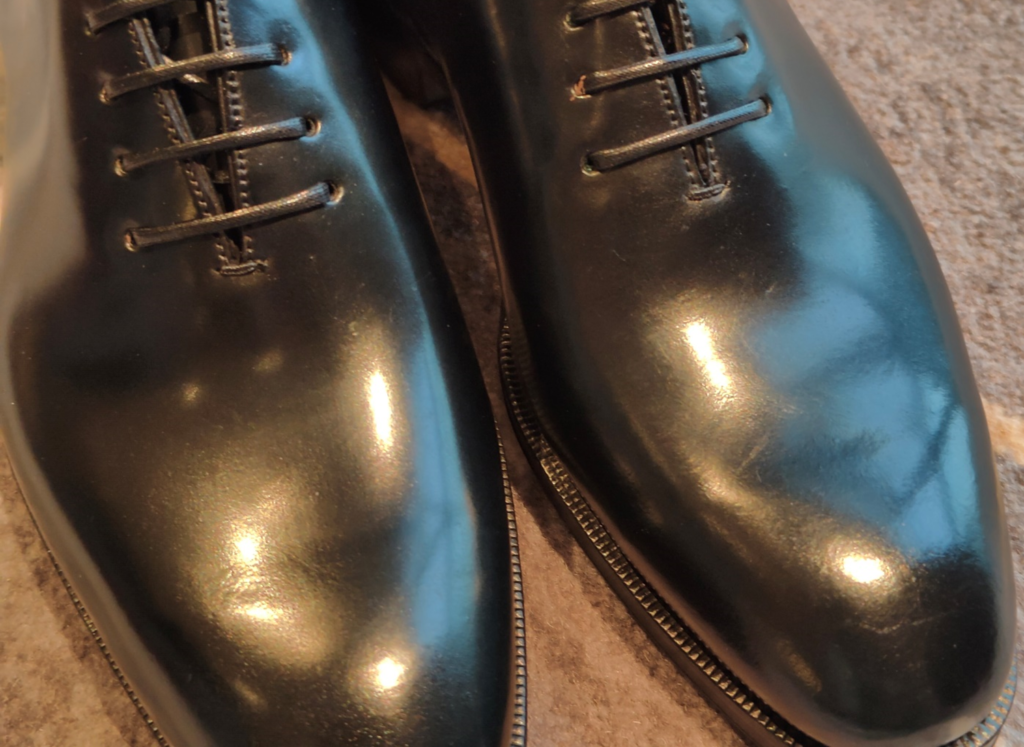
Horween black shell cordovan is again a presence at the top of the food chain. No matter how many critics there are, Horween shell cordovan is undoubtedly top notch in terms of price and recognition in the industry.
My own shoes and seen Carmina’s calf leather performance have not disappointed as well. I’m even curious how this is done.
Outsole
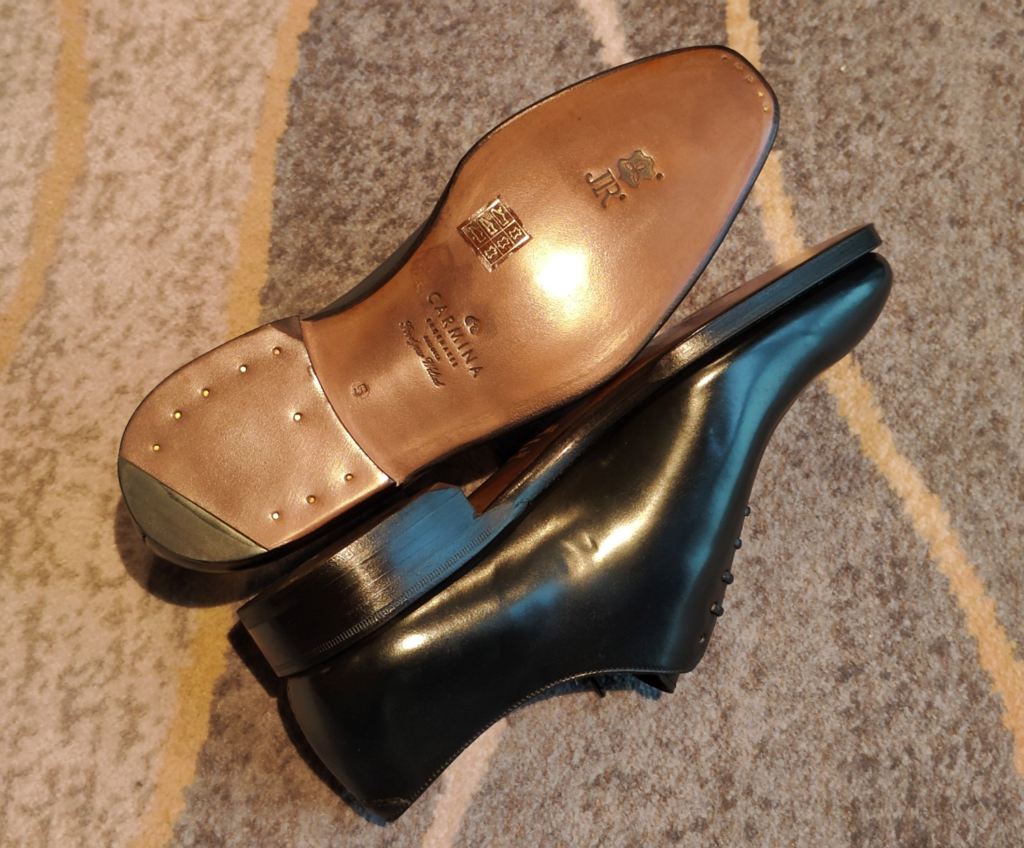
Short for Jon Redenbach, JR is the largest supplier of oak vegetable tanned leather. Its benefit is that it is more abrasion resistant and waterproof than chestnut vegetable tanned soles. The reason is that oak vegetable tanning liquid can shrink the leather fibers tighter, of course, this also requires a longer tanning time, so it is more expensive.
Material score on same price point, Carmina is leading, this is no doubt, right?
Construction
We focus on the craftsmanship on welt.
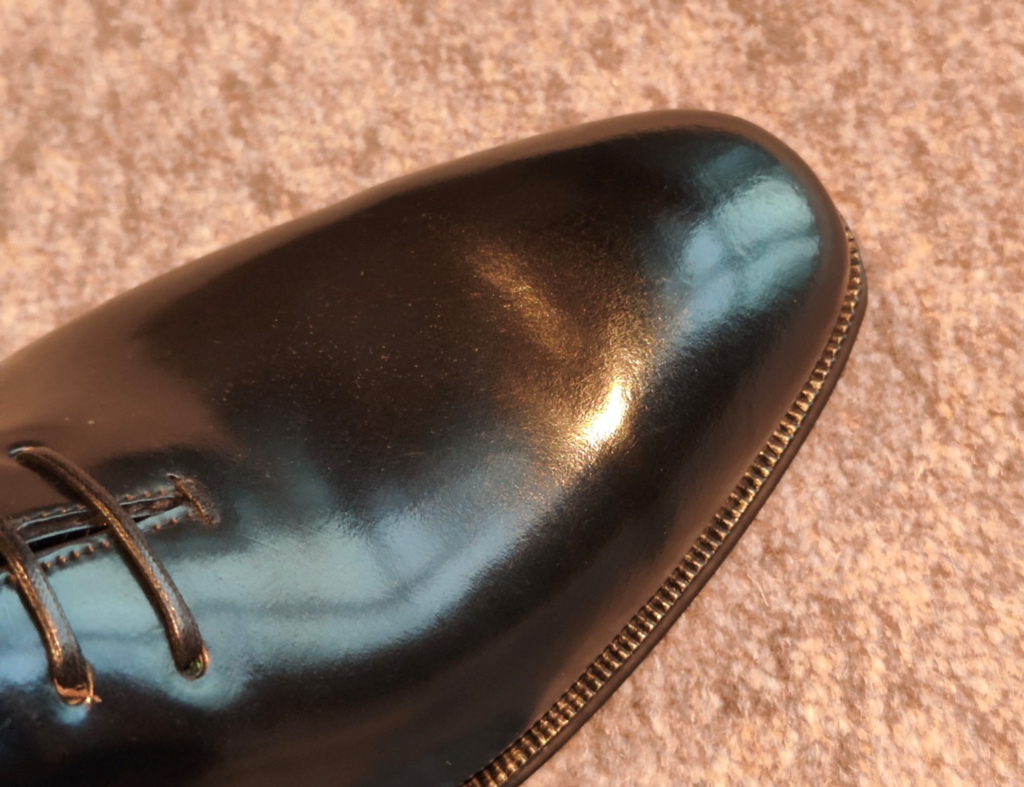
The fudge density on welt is very, very high. There are two points.
First, no matter the fudge is fine, thick or wide, or even none, and the most important thing is whether it matches the upper pattern. Can the delicacy of the upper pattern and last of Carmina shoes match such a fine fudge? The answer is yes.
Second, because the welt was stitched by machine, to make the stitches completely match the fudge is more difficult. Stitch density is not as high as the fudge, so how not to destroy the delicate feeling brought by this fine fudge?

Carmina’s method is to make the stitches very close to the upper, so in most cases, you can only see the fudge, which is delicate.
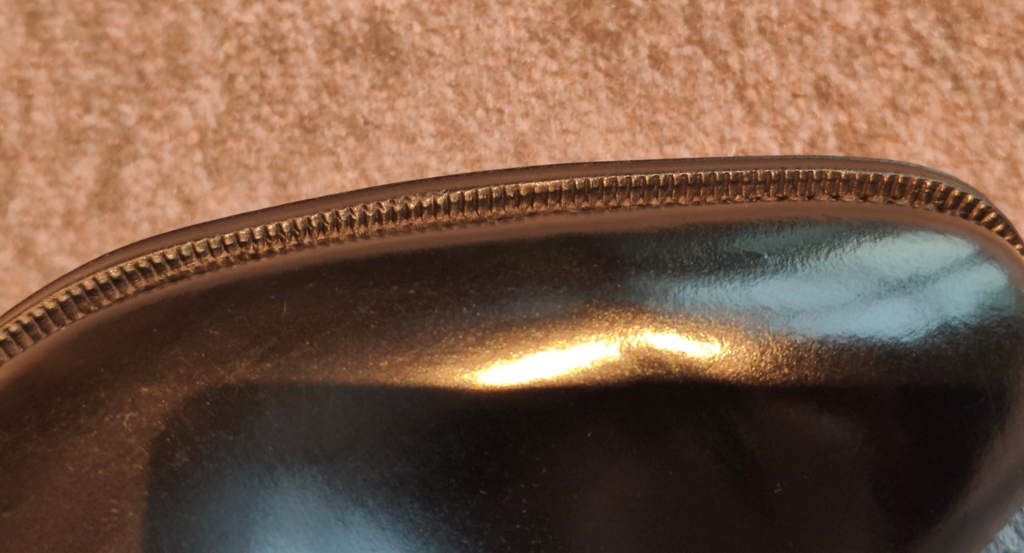
Even if I deliberately look for angles to expose the stitches, I feel that the welt is finished very clean.

Even the sides, along the edges of welt and sole, are treated with “arrow tail”.
Looking at it in such a comprehensive circle, I really didn’t find anything that Carmina didn’t do well. Why would anyone say Carmina’s shoes are poorly made?
Details
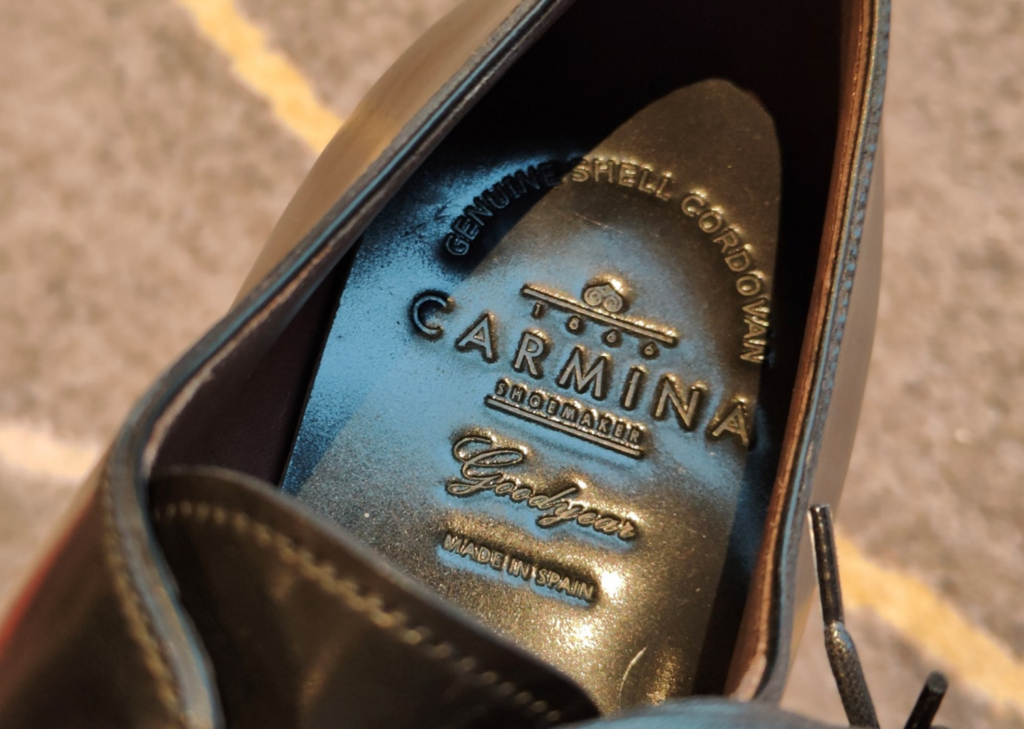
Sock lining is also shell cordovan, and above the logo, there is also a line of writing, Genuine Shell Cordovan.
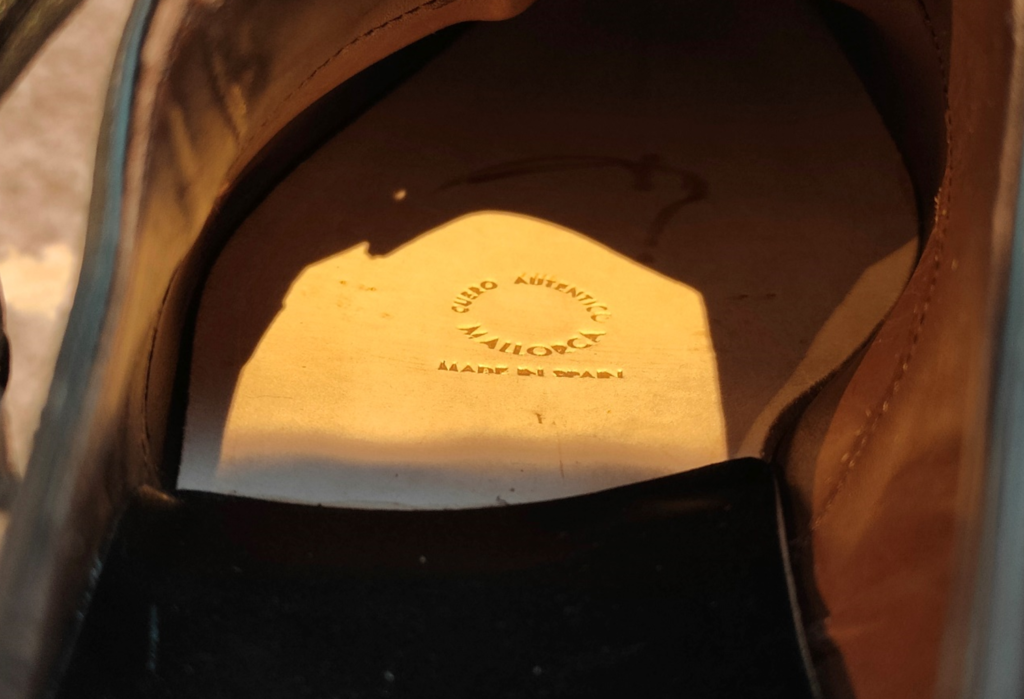
Sock lining already writes Made in Spain, on the midsole, again emphasizing this. This is really the leading brand in the Spanish footwear industry because it is doing things that help the whole industry.
Summary
Do Carmina make good shoes?. In its price point, the combination of materials and construction, even it is not called a price killer, it must be a very safe bet.
